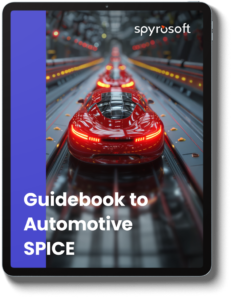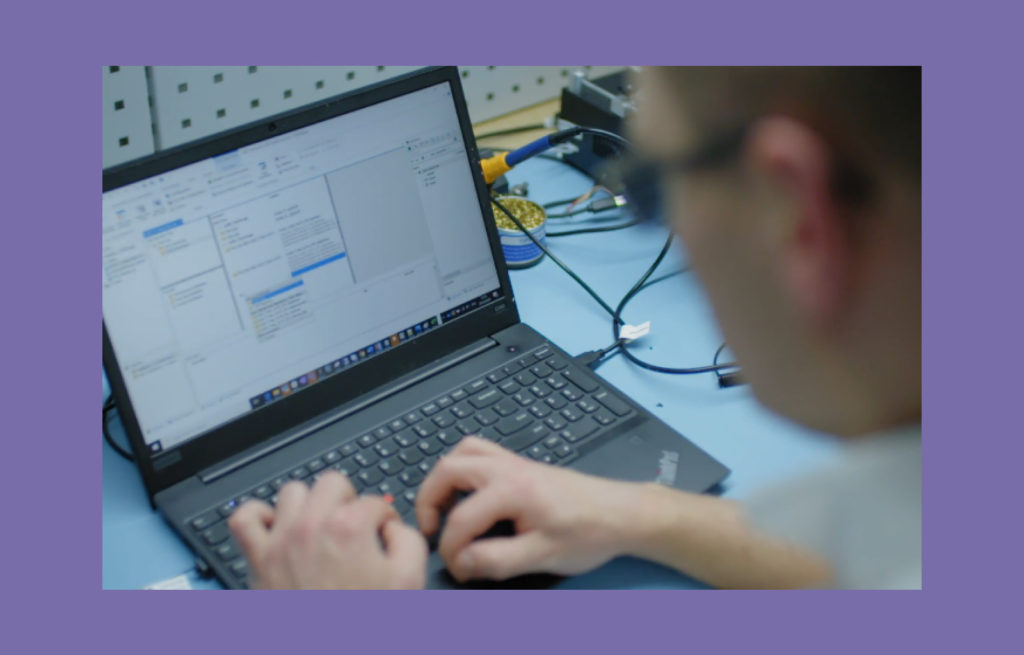What is ASPICE?
Automotive Spice, or ASPICE, stands for Automotive Software Process Improvement and Capability Determination. It was created to assess the performance of the development processes of OEM suppliers in the automotive industry.
ASPICE was developed within the ISO/IEC 15504 standard – Software Process Improvement and Capability Determination, also known as SPICE. Where SPICE gives the framework for software process assessment, ASPICE applies the process reference model framework to the automotive industry. Together with functional safety standards (ISO 26262), Automotive Spice provides effective safety practices for the sector.
What is ASPICE in the Automotive Industry?
When you think about a car these days, what comes to mind is a smart vehicle: a big display with a touch screen and apps, fully integrated with your smartphone. On top of that: video rear-view mirrors, wireless charging docks, adapted cruise control and auto-park features, or even stolen vehicle tracking software.
Advanced technology only encourages further product innovation within the automotive industry. This shift towards smarter vehicles has significantly impacted automotive software development, requiring more sophisticated and reliable software solutions. Considering the plans for cars to be even smarter with augmented reality head-up display, enhanced gesture control and enabling communication between vehicles, there is no surprise that 80% of car manufacturers focus on software development. Integrating multiple technologies is slowly turning cars into computers on wheels, which means they not only are liable to small oil leaks but also software malfunctions or potential cyberattacks.
What does ASPICE mean for OEMs and automotive suppliers?
ASPICE framework is a widely recognised standard, and key worldwide brands like BMW, Ford, or Audi use it to evaluate their electronic and software suppliers, ensuring that automotive suppliers meet high-quality standards. It gives more control over the development process and mitigates issues coming from the quality assessment level. To achieve ASPICE requirements, suppliers must adhere to stringent process standards and continuously improve their development processes. Therefore, for suppliers who are thinking about working with big OEMs, ASPICE compliance is a must-have. ASPICE simply assures seamless cooperation between Original Equipment Manufacturers and suppliers by defining the system development process and improving the overall process capability. ASPICE also helps OEMs evaluate a supplier’s process quality capability, ensuring that they can deliver reliable and high-quality products.
ASPICE certification has a 5-tier scale which determines the project maturity level:
Level 0 – Incomplete: – ASPICE requirements are partially met, and some process improvements are required to meet higher standards
**Level 1 –**Performed: Standard requirements are closely met, but some areas in the process need improvement.
Level 2 – Managed: ASPICE standards are nearly or entirely achieved, and reliable product delivery is in place.
Level 3 – Established: Performance and industry standards are being established and unceasingly developed and improved.
Level 4 – Predictable and Level 5 – Innovating: Established standards and continuous progress measurement, analysis, and evaluation lead to constant innovation.
Optimise your processes according to ASPICE
Check how we can helpASPICE Process Assessment and Validation model
The Verification and Validation model, also known as V-model, is what the ASPICE process assessment model builds on. This model evaluates various process attributes to determine the capability levels of software development processes. This model is strict in its requirement for constant evaluation and development. This way, potential issues can be eliminated at the first stage, and improvements can be applied accordingly.
V-model is divided into two stages. Each one of them has different phases:
The initial stage includes:
- Requirement Analysis
- System Design
- Architecture Design
- Module Design
- Coding
These stages are part of the software engineering process group, which focuses on the systematic design and development of software systems.
The secondary stage includes:
- Unit Testing
- Integration Testing
- System Testing
- Acceptance Testing
These testing phases are part of different process groups that ensure comprehensive validation and verification of the software.
We like our cars to be smart, to keep us safe on the road and to make the driving experience nice and easy. What we don’t think about is the technology that is behind all of this. Each year major car dealers add something to the list above to make their vehicles even more exciting and attractive to a potential buyer. And this is where the ASPICE frameworks come in, ensuring that safety standards are met, potential challenges moderated, and the software development process goes smoothly, bringing satisfactory results.
Find out more about ASPICE in our guide
Get the ebookWe’ll guide you in ensuring ASPICE compliance
Our experts will help you navigate the complexities of the Automotive SPICE framework. With our comprehensive support, you’ll be able to enhance product quality, improve efficiency, and meet industry regulations with confidence.
Check our offering page for more details: ASPICE compliance.
About the author
RECOMMENDED ARTICLES





